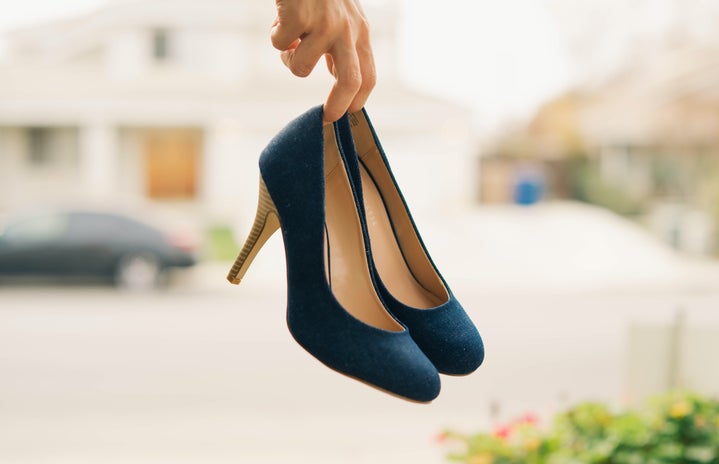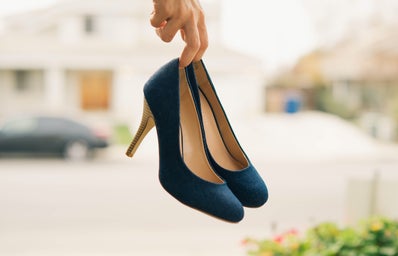Bathing suit sets for under $10 and buy one get one free jeans? Sign me up! As we walk through the mall or scroll online looking for the cutest fit, these crazy low prices draw us in. C’mon girl don’t lie to yourself, I know you ordered your whole swimwear collection off Zaful this summer. And listen, I get it, we’re in college, broke as heck, and all we want is to be able to buy all those trendy clothes that we see on instagram while staying on that college budget. I’m not here to judge, because I too have fallen into the trap of fast fashion, but I’m now making a conscious decision to stop the cycle and switch over to buying sustainable, quality clothing and accesories.
Getting down and dirty
The fast fashion industry is one of the largest polluters in the world. According to the United Nations Environment Program, “the fashion industry produces 20% of global wastewater and 10% of global carbon emissions [which is] more than all international flights and maritime shipping”. On top of this, “textile dyeing is the second largest polluter of water globally and it takes around 2,000 gallons of water to make a typical pair of jeans” (UN). These statistics are more than concerning, and this doesn’t even take into account the amount of landfill space these clothes take up–which the UN estimates as “one garbage truck of textiles is landfilled or burned” per second. The reason for so much waste? Clothing that comes out of fast fashion is cheaply and poorly made. Therefore, consumers are throwing away more clothes because they don’t fit right, break after a few wears and only cost a small sum of money in the first place, making them easily replaceable. The other problem with fast fashion is it’s very own culture of ever-changing trends and constant production of new styles. According to Huffpost, “the fashion industry is churning out 52 ‘micro-seasons’ per year”. This means that every week, something we bought just a month ago is out of style, and we feel the need to buy more unnecessary items to keep up with new trends. In the long run, buying into fast fashion ends up being absurdly more expensive, to both you and the environment, than just buying quality items in the first place.
Some brands that I would stay away from…
Brands I would warn you to look out for include, but aren’t limited to, Forever21, Zaful, Shein, H&M, and even Pacsun and Urban Outfitters; don’t let those ridiculously high prices fool you! These items are majorly produced in sweatshops overseas–meaning workers, materials (including harmful chemicals!) and waste management are often unregulated. Workers are abused (unfair pay and working conditions), harmful chemicals are added to clothing, and excess textiles and dyes are dumped into landfills or nearby bodies of water, causing severe contamination.
If you must shop at these stores, I would urge you to look into sustainable clothing collections such as H&M’s ‘Conscious Collection’ or ‘Urban Renewal’ by Urban Outfitters. H&M’s Conscious Collection claims to serve a “range of organic and sustainable clothing”( H&M.com) and Urban Renewal upcycles returned, overstocked and/ or “out of style” clothes to turn them into trendy and unique pieces. Although I would stress staying away from supporting these companies in general, programs like these at least put in an effort to be sustainable.
Now, enough about dragging companies for their unsustainable practices; here’s how to make a positive impact by altering the way you shop!
One of my favorite and cheapest ways to buy sustainably is through second hand. Chain thrift stores such as Savers and Buffalo Exchange are located all over the U.S and are generally easily accessible. Online thrifting sites such as Poshmark, ThredUp and Mercari are also great for those who want to shop online or don’t have access to any near-by consignment shops. Buying second hand is not only insanely sustainable, but also insanely budget friendly! If you’re lucky, you can even find unworn clothes with original tags on them!
Another way to amp up your sustainable practices is to simply repair or upcycle clothes that you already own. Instead of throwing away a perfectly good jacket because of a broken zipper, replace the zipper yourself (super affordable!) or bring it to a nearby tailor. Cover stains with patches, cut up old shirts to give them a new vibe, tie dye basic tees, and add studs to denim or leather to give them a cool, edgy look. It’s super simple to turn old clothes new again by adding personal touches–and the best part? It’s completely customizable!
Lastly, if you have a little bit of extra money to spend, indulge in quality made, sustainable goods. Brands such as Reformation, Everlane and Levi’s (especially the Water



